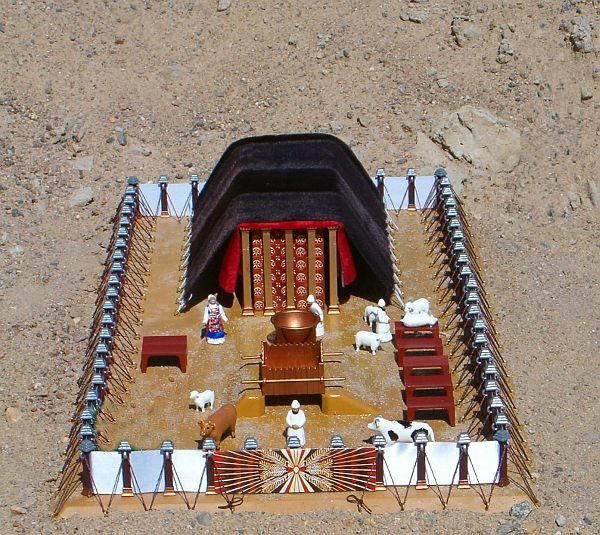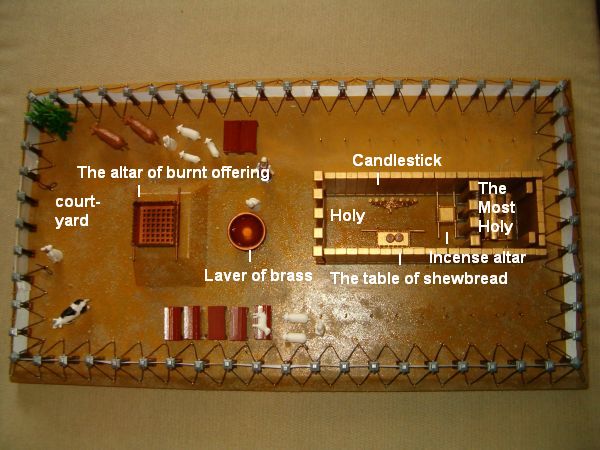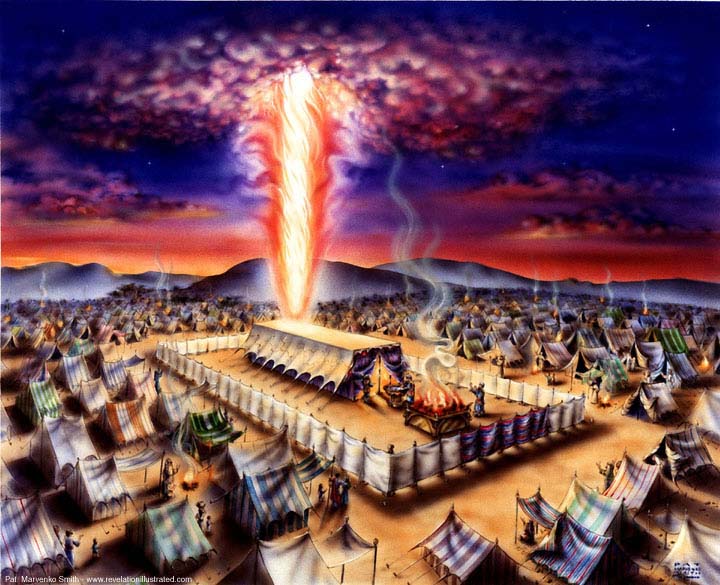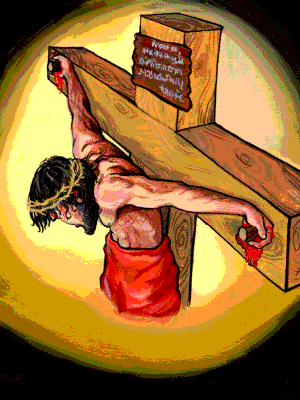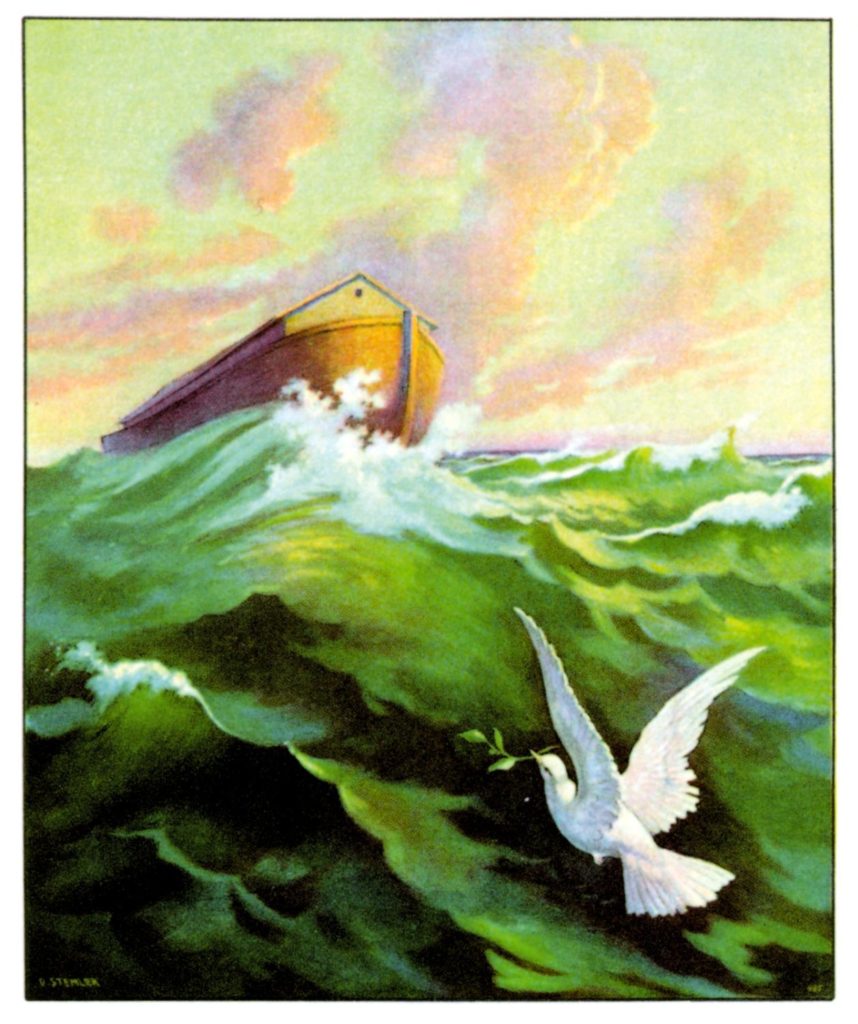Why does the mainstream Christian hardly if ever teach about the Tabernacle of Moses? After all, everything in it points to Yeshua/Jesus the Messiah, the cross and the gospel message. Moreover, the Bible declares that, “Your way, O Elohim, is in the sanctuary [or Tabernacle of Moses],” (Ps 77:13). Studying the tabernacle reads like a multidimensional, all human senses involved, heaven and earth inter-relational gospel tract shows humans how to go from a state of sin and unholiness into a holy and righteous personal relationship with their Creator that will last into eternity. Learn about this and much more in this video. For a fuller study on the Tabernacle of Moses, go to https://www.hoshanarabbah.org/pdfs/ta… for a free article.
Category Archives: Tabernacle of Moses
Natan’s Commentary Notes on Numbers 8–11: The Menorah, Silver Trumpets & Glory Cloud

Numbers 8
Numbers 8:2, The menorah. The phrase toward the face of the menorah is an interesting one. The Jewish sages teach that the three wicks on the right and the three on the left were all directed toward the menorah’s central stem, thus concentrating light toward the center. The menorah symbolized that YHVH is the Source of all light (The ArtScroll Stone Edition Chumash, p. 775). What are the connotations of this for a believer in Yeshua? How did Yeshua describe himself? (See John 8:12; 9:5.) Moreover, what did he mean when he said that “I am the vine and you are the branches?” (John 15:5) What does this mean and how is this pointing to a type of human menorah? Now relate this to the seven Messianic assemblies of Revelation 2 and 3 being likened to menorahs (Rev 1:13, 20). Is Yeshua the center of all that we do? Do we place all of our focus on him? Can we say, as the Apostle Paul did, that “in him we live and move and have our being” (Acts 17:28)? Does the power of his resurrected life and anointing flow through you even as oil was in the menorah and sap flows through a tree to its branches?
Redeemed Israelites Are That Menorah
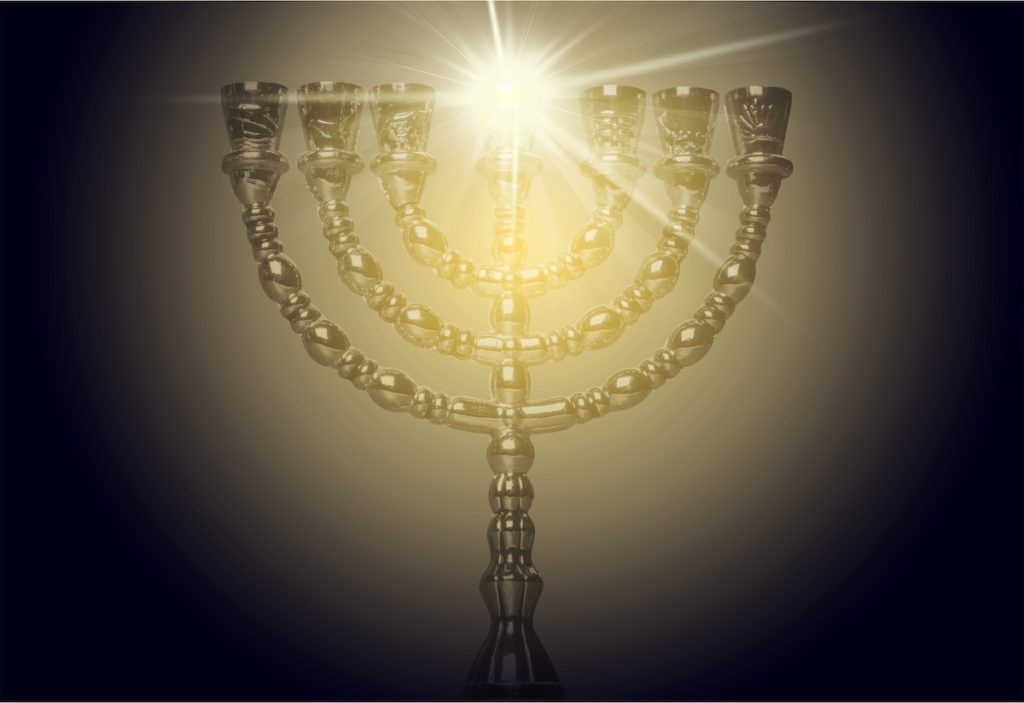
The Scriptures plainly states that Yeshua and his body of followers are likened to a tree of which the seven-branched menorah that adorned the mishkan (tabernacle) in the wilderness as well as the sanctuary of Solomon’s Temple is a picture. Furthermore, remember what Yeshua said in John 15:5? “I am the vine and you are the branches …” This is a perfect picture of the menorah, which has a central trunk with six (the number representing man) branches growing out of the trunk. Remember what Yeshua said in Matthew 5:14–15, that his followers were to be lights upon a lampstand on a hill for all the world to see—a clear allusion in the mind of anyone in Yeshua’s audience to the temple’s menorah (which was upon the Temple Mount like a light on a hill).
Additionally, when a redeemed believer in and follower of Yeshua is in a sacred state of worshipping his Master and Savior, he will often lift his arms heavenward. Not only is this the universal sign of surrender (in this case to one’s Heavenly Master), but when we lift our hands our bodies are actually forming a human menorah. By doing this, in worship we are acting out what we are—a lampstand to the world radiating forth the good news of the truth and love of Yeshua.
In fact, The Scriptures shows us that the menorah, and not the cross, is the symbol of Yeshua’s spiritual body of believers. We see this in Revelation 1:12, 20 and 2:1 where the seven congregations are symbolized as a seven-branched menorah! The menorah here is the symbol of the congregation of redeemed believers.
Though the cross is representative of the redemptive work Yeshua accomplished on our behalf, it is not the symbol of the body of believers, commonly called the “church,” but the menorah is! Furthermore, in Jewish thought, the menorah is analogous to an olive tree (the ancient temple menorah was constructed of hollow tubes of solid gold filled with olive oil that burned when lit), to which the Apostle Paul makes reference in Romans 11, as representing the tree of life (which ultimately represents Yeshua) into which all must be grafted if they are to be part the spiritual body of Yeshua and have his eternal life.
Numbers 8:10, The children of Israel shall lay their hands. By this act, the Israelites were affirming on earth YHVH’s choice of the Levites as the tribe who would minister to him in the tabernacle by assisting those of the Aaronic priesthood. When did YHVH chose the Levites to serve him? (See Exod 32:29, read the preceding verses for context; cp. Num 8:18–19.) Are there examples in the Testimony of Yeshua of the congregation of redeemed Israelites laying hands on individuals who had been chosen to serve YHVH in some special way? (Read Acts 6:1–6; 13:1–3.) What was a key element in the choosing of these spiritual vessels? (Note Acts 6:3; 13:3.)
Numbers 8:24, From twenty-five years old. A young Levite went into a five year training period starting at age 25. How long did this apprenticeship last and when did he begin ministering as full-fledged Levite? (See Num 4:23; , 30,35,39.) Can you recall other biblical examples of YHVH preparing his servants for leadership by passing them through a period of time of spiritual training and refinement? Let’s test your knowledge of Bible trivia how long did Moses, Joshua, Samuel, David, the 12 disciples, and Paul spend in YHVH’s apprenticeship program before being launched into ministry? YHVH’s qualifications for ministry leaders are stringent and are not to be trivialized. The same is true for leaders in the congregation of redeemed Israelites. (Review 1 Tim 3:1–7; Tit 1:5–9.)
Numbers 9
Numbers 9:1–14, The Second Passover. Here we see contrasted those who are not able to keep the Passover, but it is in their heart to do so, while the second group are able to keep the Passover, but don’t want to. To the first group, YHVH is gracious and makes allowances for them through the spirit of the law, while to the second group, the penalty is banishment from Israel.
Continue readingMoses coming into the holy of holies—an example for US to follow
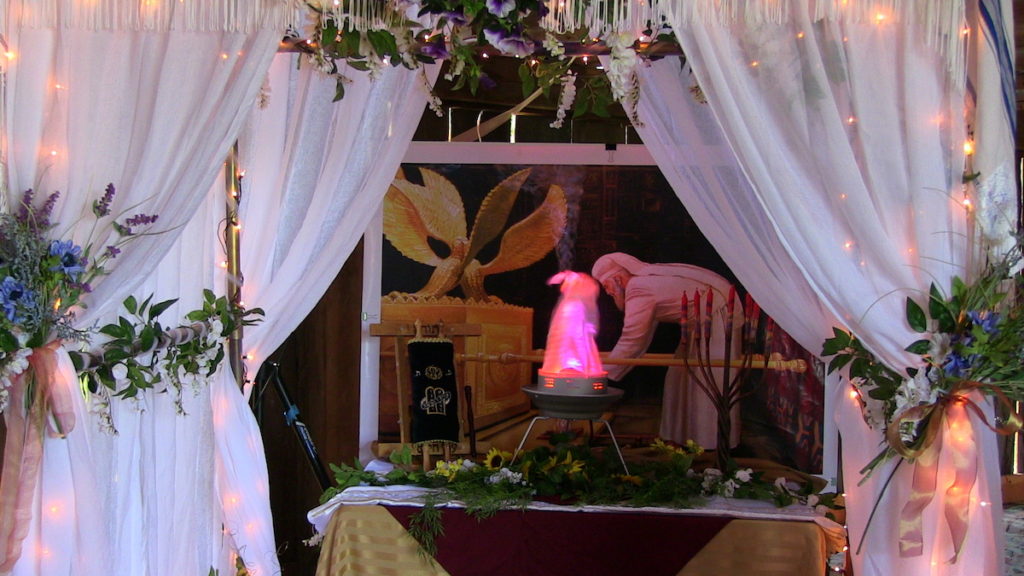
Numbers 7:89, When Moses went into the tabernacle.Moses entering into the inner most sanctuary of the tabernacle is a lesson for us in how to experience intimacy with our Father in heaven through Yeshua the Messiah. To understand this, let us first ask and answer some important question.
The holy of holies in the tabernacle from which the voice of YHVH emanated pictured what? (See Rev 7:15.) The Tabernacle of Moses is a spiritual picture of what? (Read Eph 3:21–22; 1 Cor 3:16; 1 Pet 2:5.)
If the holy of holies represents Elohim’s throne room in heaven, and the saints are the temple of the Set-Apart Spirit, can they, like Moses, hear the voice of Elohim? Again, let us explore the answer to this question by asking some more questions and finding the answers in Scripture. (See what Yeshua said in answer to this question in John 10:3–5, 27 cp. Acts 8:29; 10:19; 11:12; 29:4.) How does YHVH now speak to his people? (Note John 16:13; 1 Cor 2:12.) How does the Spirit interact with man to speak the mind, heart and will of Elohim to humans? (See John 14:17; Job 32:8; Prov 20:27; Rom 8:16; Eph 3:16; 1 John 2:20, 27; 4:2–3; 1 Cor 2:10–14.)
We find a corollary passages to Numbers 7:9 in Psalms 61:4 where David speaks of abiding in YHVH’s tabernacle forever, and putting his trust in the shelter of YHVH’s wings.With this in mind, now consider this:Over the mercy seat on the ark of the covenant, which was the seat of Elohim’s presence on earth and symbolically represented his heavenly throne room, was the over-shadowing wings of the two cherubim (for another perspective of Elohim’s throne room, see Isa 37:16; Ezek 10:1–22; 11:22–23). It was in this place of intimate worship before the “Rock that his higher than me” (verse 2) that David sought shelter or refuge and deliverance from his enemies (verse 3). Phrases like, “under the shadow of your wings” is a Hebraism meaning “before YHVH in the place and state of worship” (see also Pss 17:8; 36:7; 57:1; 63:7; 91:1, 4).
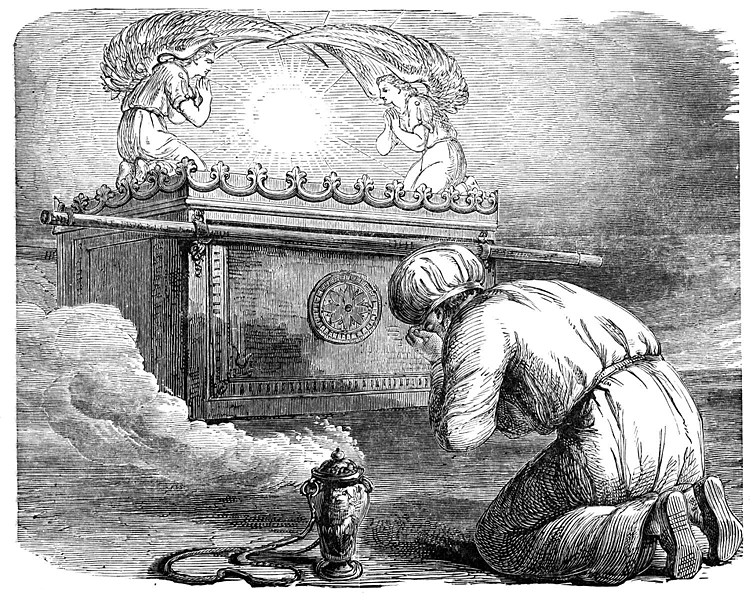
It was also in this place—between the cherubim—that Moses heard the voice of Elohim (Num 7:89), and that David would see the power or might, strength and glory or manifest presence of Elohim in a prophetic, ecstatic or spiritual vision (Ps 63:2). The saints now have access to the throne of Elohim through Yeshua the Messiah and prayer (Rev 5:8; 8:3).
Occasionally, YHVH will still communicate with his servants through an audible voice, dreams, visions, or an angelic visitation. But this is rare now, even as it was in biblical times. This is because YHVH is testing his people to see if they will walk by faith, not by sight (2 Cor 5:7), and will remain faithful to his written word as found in the Bible.
Currently, YHVH is refining, testing and preparing his bride—his people— for her marriage to Yeshua. Will she be faithful to him having never seen him visually? The time is coming after Yeshua’s coming, however, when she will be in YHVH’s blessed presence forever, which is the object or end goal of our faith.
Voice of One…above the mercy seat. Think about this for a moment. The ark of the covenant upon which the mercy seat rested contained and was surrounded by several items, which give us an understanding as to on what basis we are to come into YHVH’s presence to hear his voice.
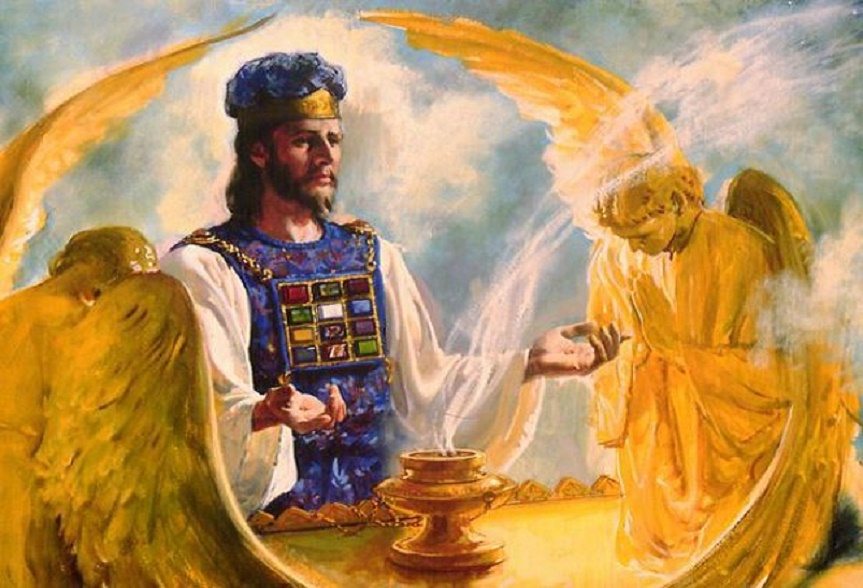
First, the ark contained Aaron’s rod that budded. Second, it contained the golden pot of manna and then the two tablets containing the ten words written by YHVH’s finger. Leaning up against the ark was the scroll containing the entire Torah that was given to the Israelites through Moses.
All together these items in and around the ark teach us that man can only come into YHVH presence on the basis the Torah-word of Elohim of which Yeshua was and is the Living Manna or bread from heaven, and upon which man must feed for his spiritual sustenance.
Even as the manna was in a golden pot, so YHVH’s words should be within the heart of man. The ten words or commandments which were written by YHVH’s finger form the foundation of the Torah and need to be written on the heart of man.
The heart of man contains two parts, like the two stone tablets, and man’s heart, until spiritually regenerated, is hard and stoney like the rock upon which the ten words were written.
YHVH is calling his servants to be a kingdom of priests of which Yeshua the Messiah is our Chief High Priest of which the rod, a symbol of the tree of life, is a prophetic picture. Under King Yeshua’s rulership, in his millennial kingdom, his priest-saints will exercise the authority in leading this world into obedience to and the worship of YHVH. The saints are presently in training for that lofty role as Yeshua’s kings and priest co-ruling with him over the world (1 Pet 2:9; Rev 1:6; 5:10; 20:6).
The Torah scroll leaning up against the ark shows us that obedience to YHVH’s instructions is dependent on our relationship with Yeshua through which his words must be written on our hearts by the indwelling presence of the Spirit of Elohim.
Moreover, when the high priest would come into the holy of holies, he carried a censor filled with incense and sprinkled lamb’s blood on the ark of the covenant. This is pictures the saints coming into YHVH’s Presence only through the blood of Yeshua the Messiah who atoned for man’s sins, and through humble prayer like a contrite petitioner before a mighty king.
The Role of the Levites and the Tribal Banners

Numbers 1
Numbers 1:50, The Levites. The role of the Levites was to assist the priests in the tabernacle service (Num 3:6–8; 16:9; 1 Chr 23:28–32; Ezra 3:8) including caring for the tabernacle (Num 1:53) and its furniture, its setting up, dismantling and transporting (Num 3–4). In addition, they assisted the priests by preparing the cereal offering (1 Chr 23:29). They acted as singer and musicians in the temple to offer praise to YHVH (1 Chr 23:30). They were allowed to approach the tabernacle furniture only after the priests had covered and prepared them for transport (Num 4:5–15; 18:3) but they could not touch any of the tabernacle’s set-apart instruments lest they die (Num 4:15), nor could they even see them (Num 4:20).
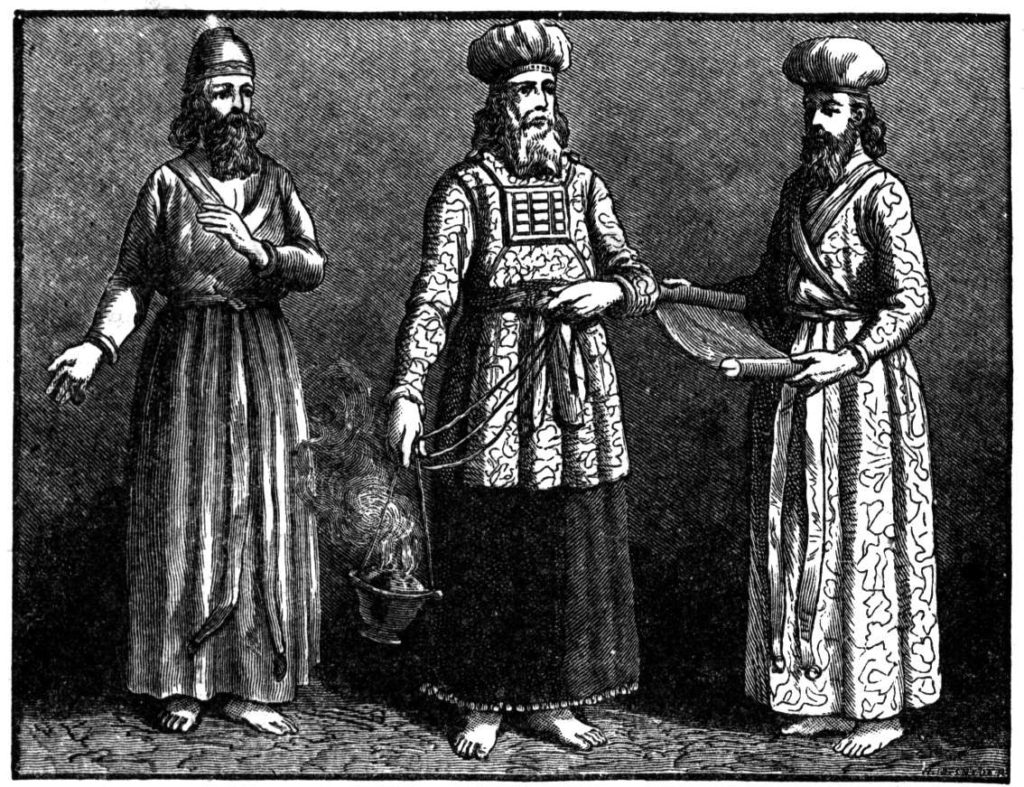
Not only were the Levites commissioned to attend to the needs of the priests and the things of the tabernacle, but YHVH instructed them “to attend to the needs” or “keep charge” (Heb. mishmereth) of, presumably, the spiritual needs of the whole congregation or children of Israel (Num 3:7–8). Although mishemereth is a noun meaning “charge, function, obligation, service, or watch,” it is often translated into English as a verbs of actionsuch as “to keep, guard, keep charge, or watch” through its root shamar, a verb meaning “to keep, guard, observe, give heed.” Mishmereth principally refers to the Levites’ obligatory duties relating to the service of the temple.
Later on, the Levites were involved in teaching and interpreting the Torah (Neh 8:7, 9; 2 Chr 17:7–9; 35:3). There is no indication that the Levites were permitted to offer sacrifices, with the notable exception of Samuel, who was a Levite, but not a priest (1 Sam 1:1 cp. 1 Chr 6:28).
YHVH chose the Levites as his set-apart ministers to replace the firstborn of the Israelites that he spared when he smote the firstborn of the Egyptians (Num 3:12–13, 41–45).
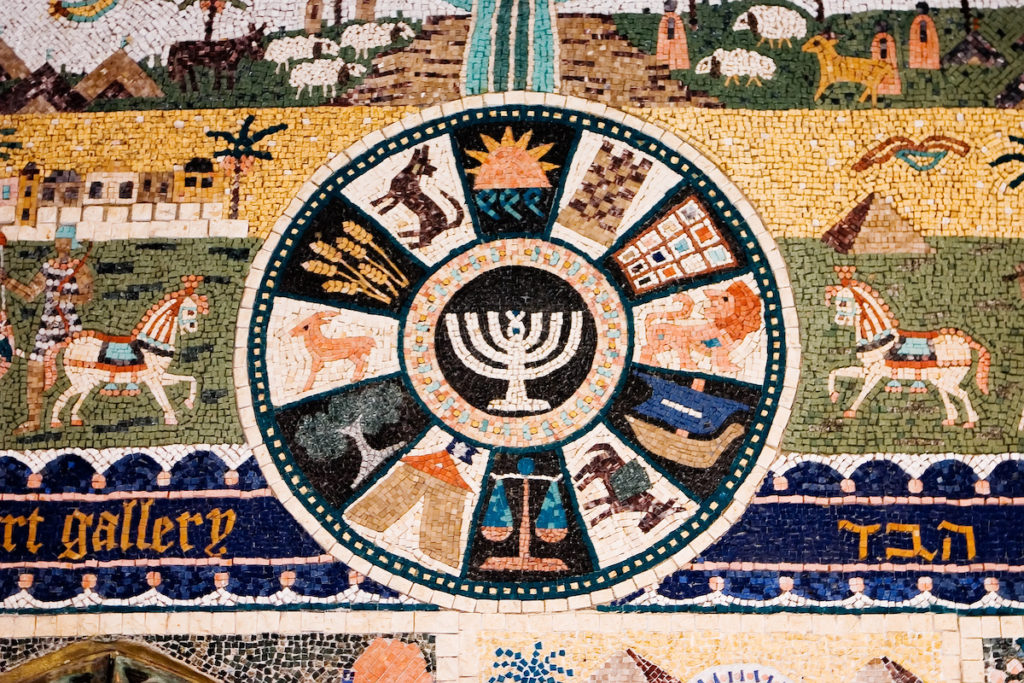
Numbers 1:52, Standard [or banner]. Each tribe had its own flag or banner. Although the Torah doesn’t tell us what these flags looked like, Jewish oral tradition records this information. According to Numbers Midrash Rabbah, the flag of each tribe was the color of its stone in the high priests breastplate and is described as follows:
- Reuben’s stone was ruby and the color of the flag was red with embroidered mandrakes.
- Simeon was topaz and his flag was green with the town of Shechem embroidered thereon.
- Levi was smaragd (like an emerald) and the color of his flag was one third each of white, black and red and was embroidered with the urim and thummim.
- Judah’s was carbuncle and the color of his flag was like the heavens and was embroidered with a lion.
- Issachar’s was a sapphire and the color of his flag was black and embroidered on it was the sun and moon, which is an allusion to the text in 1 Chronicles 12:33 that the sons of Issachar understood times.
- Zebulun’s was an emerald and the color of his flag was white with a ship embroidered on it in allusion to the text that Zebulun shall dwell at the shore of the sea (Gen 49:13).
- Dan’s stone was the jacinth and the color of his flag was similar to sapphire, and embroidered on it was a serpent in allusion to the text that Dan shall be a serpent in the way (Gen 49:17).
- Gad’s was an agate and the color of his flag was a blend of black and white, and on it was embroidered a camp in allusion to text that says Gad shall be a troop (Gen 49:19).
- Naphtali was an amethyst and the color of his flag was like clarified wine of not a very deep red, and on it was embroidered a dear in allusion to the text which says that Naphtali will be like a dear let loose (Gen 49:21).
- Asher was beryl and the color of his flag was like the precious stone with which women adorn themselves, and embroidered with an olive tree in allusion to the text that says that Asher’s bread shall be fat (Gen 49:20).
- Joseph was an onyx and the color of his flag was jet black and embroidered thereon for both princes, Ephraim and Manasseh, was Egypt because they were born in Egypt.
- On Ephraim’s flag was embroidered a bullock in allusion to the text that says his firstling would be a bullock (Deut 33:17).
- On Manasseh’s flag was embroidered a wild ox in allusion to the text which says his horns are that of a wild ox (Deut 33:13), which alludes to Gideon, the Joash, who came from that tribe.
- Benjamin’s stone was jasper and the color of his flag was combination of all the twelve colors, and embroidered thereon was a wolf in allusion to the text that says that Benjamin is ravenous like a wolf (Gen 49:27).
Now compare this list of precious and semiprecious stones with the list of stones that will comprise the twelve foundations of the New Jerusalem (Rev 21:19–21). There are a lot of similarities.


